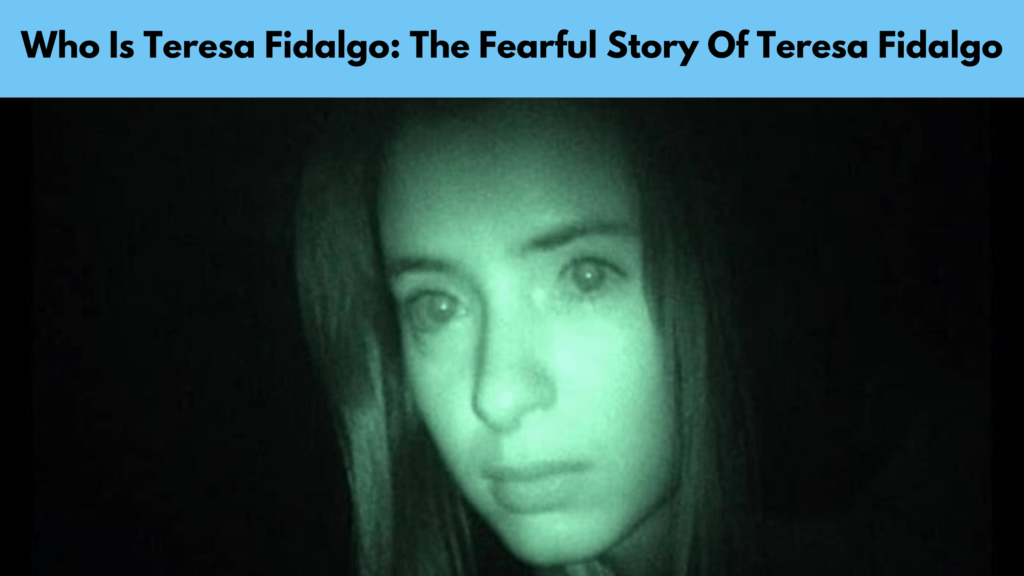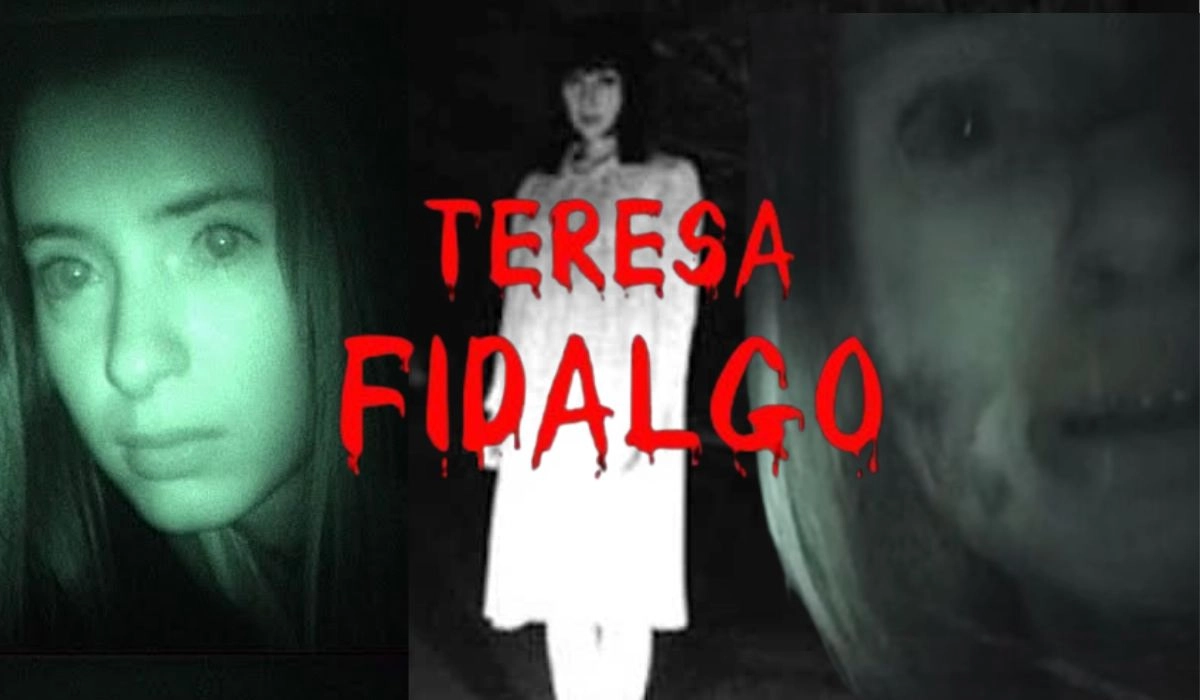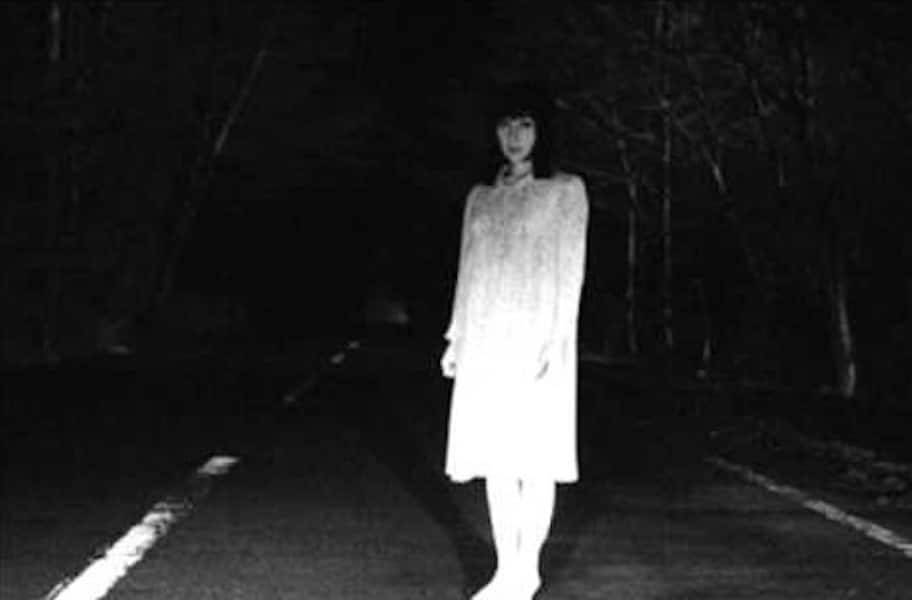Teresa Fidalgo: The Truth Behind The Viral Ghost Story
Is the chilling tale of Teresa Fidalgo a genuine account of spectral encounters, or is it merely a product of the internet's penchant for crafting elaborate myths? The truth, as we shall see, is far more prosaic, yet the story's enduring power speaks volumes about our fascination with the unknown.
The digital age, with its lightning-fast dissemination of information, has given rise to countless urban legends. Among these, the story of Teresa Fidalgo stands out, captivating the imaginations and igniting the fears of a global audience. The legend, a staple of online folklore, tells of a young woman who met a tragic end and whose spirit now purportedly haunts those who share her story.
To understand the narrative's impact, it is helpful to first familiarize ourselves with the basic details of the story. According to the legend, Teresa Fidalgo, a resident of Portugal, perished in a car accident. This incident, which the story places in Sintra, Portugal, took place in 1983. It is a common practice in these tales to include a specific location, date, and time to ground the story in reality and increase its believability.
| Information | Details |
|---|---|
| Name | Teresa Fidalgo (Fictional) |
| Reported Date of Death (in the story) | 1983 |
| Location of Accident (in the story) | Sintra, Portugal |
| Nature of Story | Viral Internet Hoax / Urban Legend |
| Key Themes | Paranormal, Supernatural, Ghost Story, Internet Hoax |
| Primary Medium of Spread | Social Media, Viral Videos, Websites |
| Creator | David Rebordo (Filmmaker) |
| Origin | Short Film "A Curva" (The Curve) |
| Exposure Date | 2003 |
| Authenticity | False |
| Reference | Wikipedia: A Curva |
The chilling tale of Teresa Fidalgo gained significant traction in 2003 when a video surfaced online. This footage, which purported to show the ghostly apparition of a Portuguese woman who had died in a car accident, quickly went viral. The video's creators claimed that those who watched it would be haunted by her spirit. This element of interactivity, where the audience is directly implicated in the haunting, is a common feature in these types of stories and contributes significantly to their appeal.
The details of the story, as it spread across the internet, were consistently maintained. Teresa Fidalgo was always a young woman, her untimely death always occurring on a winding road in Sintra, Portugal, in 1983. The alleged footage of the accident, circulated on July 12, 2003, twenty years after the stated date of the incident, added a layer of authenticity through a visual element.
The structure of the narrative is also noteworthy. The story claims that if you share her story, you will be haunted. This interactive element, where the listener becomes a participant, plays a crucial role in how the story spreads and maintains its presence in the digital realm. The tale's presence on social media platforms like Facebook, Instagram, Twitter, WhatsApp, and TikTok further accelerated its reach and spread.
However, despite the compelling nature of the narrative, it is crucial to clarify that the Teresa Fidalgo story is, in essence, a work of fiction. It's a sophisticated internet hoax. Although the story is designed to evoke the idea of the paranormal and tap into our primal fears, the details of the story do not align with reality. There is no verifiable evidence to support its authenticity. This is an important distinction, particularly in the age of misinformation.
The roots of the Teresa Fidalgo story can be traced back to a short film titled "A Curva" (The Curve), created in 2003 by Portuguese filmmaker David Rebordo. The film was a fictional horror project, designed to frighten its audience. Rebordo later admitted that the story had no basis in reality, and he had crafted the tale and the accompanying footage for his short film "Virus" in February 2003. The video depicting the "ghost" of Teresa Fidalgo was a part of this project.
This revelation exposes the nature of the Teresa Fidalgo story. What began as a film project transformed into a viral internet legend. It exemplifies how a creative work can evolve and take on a life of its own in the digital world. The story of Teresa Fidalgo is a testament to the power of narrative, visual elements, and our inherent fascination with the unknown.
The widespread dissemination of the Teresa Fidalgo story highlights a broader trend: the proliferation of "white lady" tales and other ghost stories online. While these stories share common themes, the specificity of the "Teresa Fidalgo" narrative, combined with the purported links to a real place and time, contributed to its widespread appeal. This specificity lent a sense of realism, allowing the story to resonate with many.
The tale's popularity also underscores the role of the internet in the creation and circulation of urban legends. Social media platforms provide the perfect environment for these stories to thrive. Through sharing, commenting, and generating new versions of the story, users collectively contribute to its perpetuation.
Furthermore, the Teresa Fidalgo story has become a subject of discussion and debate. Advertisements and online articles frequently reference the tale, with many people wondering about its authenticity. This level of attention ensures that the narrative remains relevant. The curiosity about whether it's "real or fake" reinforces its status as a cultural phenomenon.
Another aspect contributing to the story's longevity is the way it taps into universal fears and anxieties. The fear of death, the unknown, and the supernatural is deeply ingrained in human psychology. The story of Teresa Fidalgo, with its themes of a tragic death, a vengeful spirit, and a curse, capitalizes on these fears.
The story's impact can also be seen in its spread across different languages and cultures. The basic premise of the storya haunting triggered by the sharing of a name and storyis easily translatable. This allows the Teresa Fidalgo tale to transcend linguistic and cultural barriers.
The narrative has been retold, re-imagined, and adapted on various online platforms. There are countless videos, articles, and discussions. This continued adaptation ensures that the story remains relevant. The story, in its many iterations, provides a canvas for others to express their creativity.
Despite the story being identified as a work of fiction, its impact is undeniable. The tale serves as a cautionary example. The digital landscape often presents challenges in distinguishing truth from fiction. Teresa Fidalgo's tale is a reminder of the importance of critical thinking and media literacy.
The enduring popularity of the Teresa Fidalgo story is a testament to our fascination with the paranormal, the power of storytelling, and the ability of the internet to propagate and transform narratives. While the story is not real, its impact is very significant. It provides a case study in how a fictional story can become a part of online culture. Understanding the origins and spread of the Teresa Fidalgo story gives insights into the digital age, the prevalence of urban legends, and the complexities of online storytelling.


